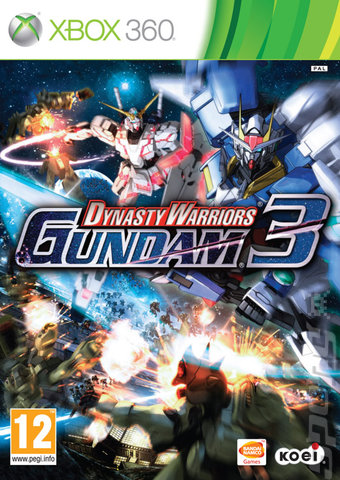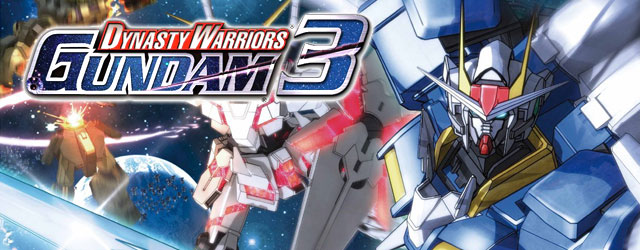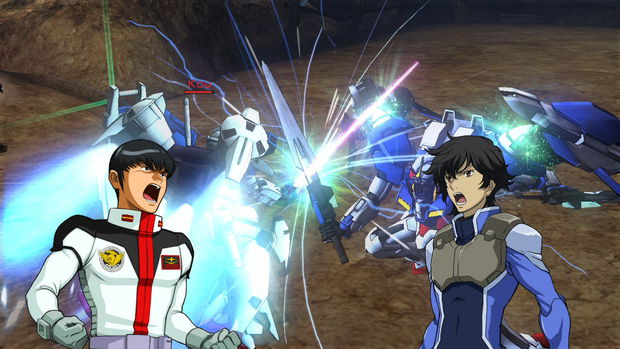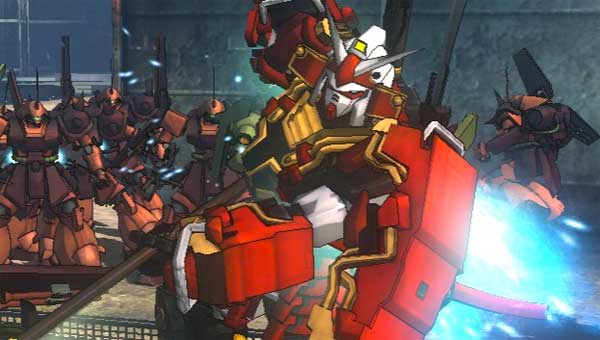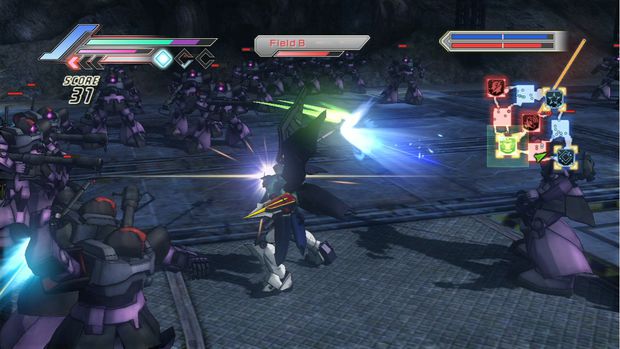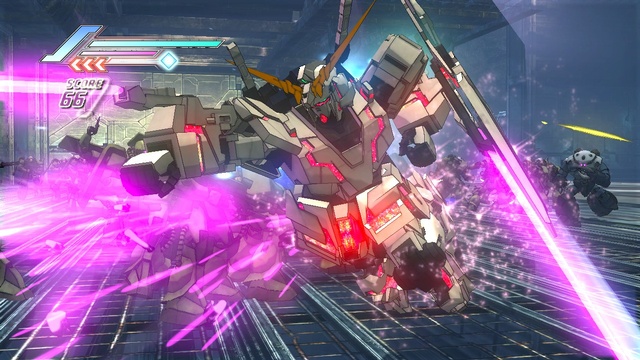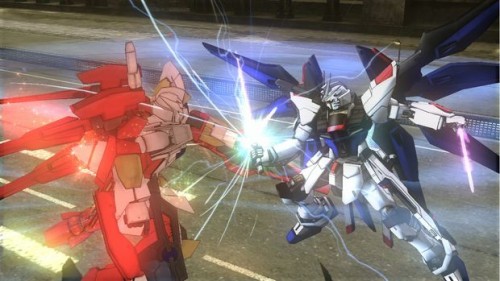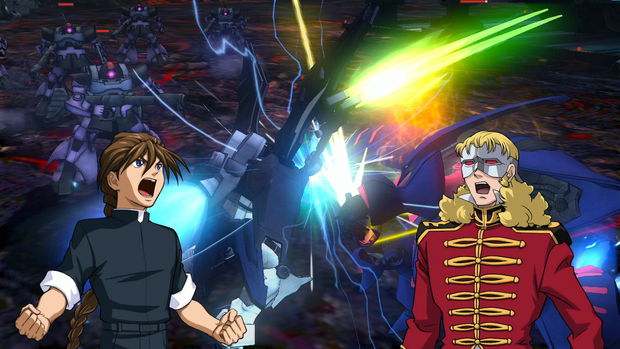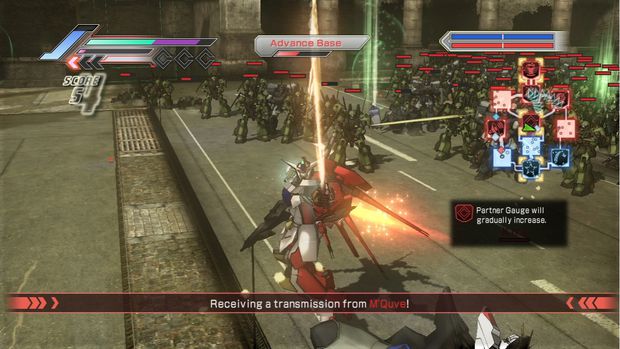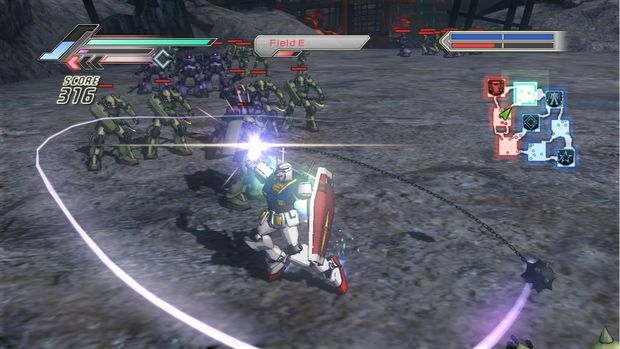Dynasty Warriors Gundam 3
Developer: Koei, Omega Force
Publisher: Namco Bandai
Platform: Xbox 360 (reviewed), Playstation 3
Release Date: June 28, 2011
Price: $59.99 (Available HERE)
PREMISE
In a western gaming market, anime based games are often met with differing reactions based on their fluctuating popularity. More often than not, we find many games based on animes do not even get considered for a international release. This is a trend that we, as gamers, are often disappointed to find, as many gamers, including myself hold a fandom for both anime and video games as two sides of the same coin. So in the rare instances where anime based game titles are released in an international market, one can imagine the level of excitement that grows as we see some of our favourite media formats converge.
Based on the immensely popular “Mobile Suit Gundam” anime series, and adapted from the Japanese hit title “Gundam Musou”, Dynasty Warriors Gundam 3 has finally arrived in the west, fully translated and fully optimised for western consoles. As the latest game in the DWG franchise, one must observe to see how this instalment improves upon the previous incarnations Has it been able to capture the spirit and character of the original shows? And has it been able to do so whilst maintaining strong story, gameplay and entertainment value? We know all too often that this balance is not easy to strike. Will it stack up in the market today?
STORY/CAMPAIGN
The story mode of the game is quite different from the “original mode” and “mission mode” that appeared in DWG’s 1 and 2. Unlike the last two games both afore mentioned game modes have been integrated into a single “story mode” which, despite the name, does not necessarily relate to story progression. After a brief tutorial level to educate the players on the main functional elements of the game, players are provided with a few starting pilots and mobile suits to begin their campaign. It should be noted that each of the different pilots will be included in different storyline progressions based on the different “chapters” of the game. The Chapters focus on numerous different pilots, often from different series of the anime. For example, one of the first available Chapters is called “Those who Understand” which tells the tales of Amuro Ray, Setsunna F Seiei, Kou Uraki and Kira Yamato (amongst others). Each of the story chapters are non-linear and don’t seem to occur in a particular chronological order. Rather, each chapter should be considered a small sub-story of a larger picture.
The underlying story behind each chapter revolves around a mysterious signal being broadcasted from an unknown planet. In each chapter the characters privy to that particular story strive to uncover the truth and secrets behind this mysterious signal. Playing through different chapters will reveal a little more each time about the overall story. To this effect, players are encouraged to play through with as many characters as possible to unlock the full plot. From the get go, players are provided with 5 beginning pilots, but the number of available pilots grows into several dozens. To that effect, the total story told by the game is HUGE.
The non-linear nature of the story mode can be seen as either a good or bad thing, depending on personal perspective. While on the one hand, the story seems displaced and tends to jump around, the breakdown of characters into smaller, manageable scales was a smart decision based on the sheer number of characters and storyline elements to be addressed. Attempting to stay too loyal to continuity would never have allowed all of these pilots to come together. For those who have played the previous DWG games, the storyline is reminiscent of mission mode in DWG1. Clear allegiances have been made between different groups, and this is often displayed on the battlefield. Members of different “chapters” will often find themselves allied with other ace pilots in the same faction. This at very least provides some sense of continuity to the universe.
GAMEPLAY
For those not familiar with the DWG series, or even the Dynasty Warriors series in general, the battles of the game are played on large enclosed battlefields from a third person perspective. The battle essentially pitches 2 armies against each other, where the player takes on the role of one of the ace pilots in one of the armies. The mission objectives to achieve victory in each battle differ, depending on the mission, but most follow a similar line of events as the battle progresses. In each battlefield there are several sub-sections called “fields” These fields allow for the deployment of additional allied forces for the player’s army. One of the goals of each battle is to capture these fields not only to assist in ally deployment, but also to diminish the fighting strength of the opponent army. By doing so, the player reduces the enemy’s “battle gauge”, which limits the number of times enemy ace pilots can return from the battlefield. The same too applies to the player and their allies. This is a feature that was not included in past versions of the DWG games. Generally victory is obtained by capturing all the fields on the map, capturing the enemy base field, or by defeating the enemy commander.
When fighting against enemies on the battlefield, most of the stock standard enemies are often weak and easy to dispatch. Enemy ace pilots will provide slightly more of a challenge, but nothing that cannot be beaten just as quickly. The enemy commanders generally also appear on the battlefield as ace pilots, but have had their health, defence and damage potential significantly boosted, thus making them a much tougher nut to crack. In previous games, other ace pilots rarely proved a threat, with exception of only the hardest missions. Many a time in DWG 2 players would find themselves an unstoppable dreadnought against their foes, and enemy ace pilots rarely posed a threat. DWG 3 however has ramped up the difficulty factor when it comes to ace pilot damage. Players now receive far more damage from enemy aces than previous games, so players must time their attacks carefully. Careless players need to be wary of how easily several ace pilots can overwhelm the player. And while compensations have been made in the form of allowing redeployment if shot down (provided the battle gauge is high enough), players will most certainly feel the difficulty level sting if they are not careful. I for one am actually happy that the difficultly curve has been better adjusted to provide more of a challenge, and truly make the players think before they rush into an enemy base.
As far as core game controls go, the movement and combat functions are very easy to learn and memorise on a control pad. On the Xbox 360 port the (X) button will serve as the players primary attack, as this controls the melee chains of combat. The (Y) button on its own controls the near useless shot functions, but when combined in a string of (X) combos allows the player to perform smash, block-bust or field wipe-out combo attacks. As far as movement is concerned, the (A) button controls the boost. Players will use this function a lot to move rapidly around the battlefield. Finally the (B) button controls the “super move”, which activates once players have performed enough attacks or feats to fill up their SP bar. When filled, the player can hit the B button and unleash devastating moves like 00 Raiser’s Trans-Am Mega Beam Sabre, Burning Gundam’s Shining Finger or Wing Zero’s Twin Buster Rifle. As the game displays it, piloting a mobile suit is
no-where near as hard as one might think. 🙂 The simplistic nature of the controls combined with the relative strength of the player’s mobile suit is one of the key factors that contributes to the illusion of power that is provided to the player. Stringing together effective attack combos is relatively easy to pull off, so many gamers won’t have trouble adapting to the gameplay.
While the gameplay action happens on the battlefield, players must also familiarise themselves with the player menu. Making full use of the shop, mobile suit development station and terminal will allow players to buy and sell plans, suits and parts, upgrade and fine tune mobile suits and interact with the myriad of characters in the DWG3 world. Bear in mind, understanding the functions of the mobile suit development station will take a little while to get used to, as using it is strongly determinant on player performance and money.
Although the game makes the player feel powerful on the battlefield, there is little question that the battles can become highly repetitive. This is added to by the limited range of attacks and combos available to the player from the one mobile suit. While it’s a good idea to provide over 300 different suits to pilot, most generally follow the same battle plan of defeat-capture-continue. Playing for extended periods of time will make the game feel like a repetitive beat em’ up. As such, players should consider changing play styles, mobile suits and even pilots at intervals to keep the buzz alive. This drawback is obviously subjective based on the player, but it still does not deviate from the raw fun value. Patience is a virtue. On the flip side of the argument though, as a majority of the game’s accessible content is locked until later stages, the game most certainly promotes longevity. This is the sort of game that keeps beckoning the player to unlock more and more. And there are a HECK of a lot of unlockables in this game. For instance, if a player wants to play with a character and mobile suit from the Gundam Wing series, the they will have to wait until they can unlock them by progressing through other character’s story modes. Ultimately, the longevity value and repetition factor will be personally determinant.
GRAPHICS AND SOUND
Visually, DWG3 has scrapped the metallic model rendering art style that it has used in the past two games in favour of a new brighter cell-shaded art style. Doing so has sacrificed a minimal degree of colour detailing, but the end result is a far more colourful and visually pleasing flair that the last two games lacked. As a game based on an anime series, players don’t expect realism out of the graphics. As a result of the change to the cell-shaded art style, the game feels more like an anime, as it should. The attacks and model colouring of the mobile suits themselves really stand out against the battlefield backgrounds. The backgrounds also feature a degree of cell shading, but not so much to the degree of the mobile suit models. The game feels more visually rich and appealing for this swap. Additionally, the anime modelled characters in chat screens and cut scenes strongly enforce this idea of being present in an anime. Plus the character models of the pilots have not appeared to have been altered to any great degree, so it is good to see that the developers have not decided to muck with the visuals of the characters themselves.
The only gripe with the visuals has to do with camera control. Players can use the right stick to take control of the camera to zoom to an appropriate angle to see the carnage unfold. This can also be achieved by the use of the left shoulder button to bring up the block function. However, when too many mobile suits crowd an enclosed area, it can get very difficult to see what is going on. Perhaps considering making the units in the make more transparent when between camera and player mobile suit would have better tackled this problem.
The audio segments of the game is where I, as a Gundam fan, feel a little let down. On the positive side, the sound effects and well appropriated for the varieties of hacks, cuts, shots and crashes during battle. These tracks were all keeping true to the anime roots as they are the same sound effects that viewers will likely have heard in the anime series. Chief among these is the classic beam sabre flair from the shows.
However in terms of music, the game is something of a let-down. A majority of the soundtracks used have been recycled from previous DWG games. These tracks were not particularly well liked as they did not truly encapsulate the same soundtracks players are used to seeing in the anime. The Japanese version of “Gundam Musou 3” was actually able to appropriate the musical scores from the animes. As a fan of the shows, I am personally disappointed that the western port does not feature some of this iconic Gundam music. I’m actually quite fond of the Trans-Am theme from Gundam 00 and the opening “Rhythm Emotion” from Gundam Wing. That said, the existing soundtrack is decent for its purpose, but feels hollow when compared to what could have been included.
With regards to the voice acting work, I will be honest in that my feelings are mixed. Some of the voice roles sound identical to their anime counterparts, which assists the inner anime fan’s desire for continuity. Brad Swaille does a fantastic job as Amuro Ray and Setsuna F Seiei. However, on the other hand, many of the voice roles from slightly older series, such as G Gundam and Gundam Wing have had their voices completely re-dubbed. New is not necessarily always better. I’m personally disappointed that we won’t get to hear Scott McNeil’s trademark “Duo Scream”. Again, this comes down to a matter of personal preference. However, there are other times in which the player will think that this game was not meant to be spoken in English. While it may sound much cooler in Japanese, some of the philosophical monologues that take place can just get painful to listen to. And then there is the whiners. Several of the characters that continuously harp on about not wanting to fight or kill… while actually killing at the exact same time. *coughKiracough* I cannot help but feel there are some parts of the translation work that could have been appropriated better.
MULITPLAYER
Like DWG2, DWG3 supports both local and online multiplayer gameplay. Local multiplayer feels richer, as it is a strict co-op mission mode that allows a second player to jump in as an additional pilot during the first player’s story mode play-through. As a multiplayer experience, the game seems richer for it. The premise of local co-op adds on an extra controllable ally to the battlefield. Very simple, but effective in providing an optional multiplayer mode to the story. What’s best is that the two players will play in the same profile, and as such will be capable of sharing captured mobile suit plans and money won from the battles.
The online multiplayer element is also a degree more solid than the last games. The online game modes allows for up to 4 players to interact and play over Xbox Live and the Playstation Network in either co-operative or competitive game modes. However, it is probably worth noting that players will likely be waiting a while before they can establish an effective connection to another player. Player’s will probably know that this online system will not have nearly as many players online as COD or Halo. Even so, the addition is certainly a welcome one, providing 15 different mission types to join up with other Gundam or Dynasty Warriors fans and kick some ass
online.
OVERALL
I will be completely honest, I love playing this game, but I understand that this is likely a biased reaction based on my fandom of the anime series and Gundam universe in general. Part of my joy for this game’s release was the inclusion of the 00 series, and many additional pilots from the Wing series. Realistically, I know that his game is not for everyone. Hack and Slash games don’t dominate the mainstream game market, and it’s highly doubtful that this game will even come close to emulating the popularity of Halo, Team Fortress 2 or Call of Duty. But it must be said, that pushing all fandoms aside, this game is still raw fun. The art style is well constructed, the battle and control functions and simple and yet powerful. It is without question the best Dynasty Warriors Gundam game out of all the 3. It is not a perfect game, as it does have the afore mentioned audio and repetition issues, but it does not deviate from the fact that it is still a lot of fun to play. It’s simple. It makes the player feel powerful. It offers escapism into a universe where you get to pilot awesome giant robots. Come on, that kicks ass, does it not? Regardless of whether or not you are an avid anime fan, or gamer to the core, this game will still definitely be worth your time.

As an additional note, the first waves of Dynasty Warriors Gundam 3 downloadable content will be arriving in DLC packages on the 19th/20th of July for 360/PS3, and on July 28th.


